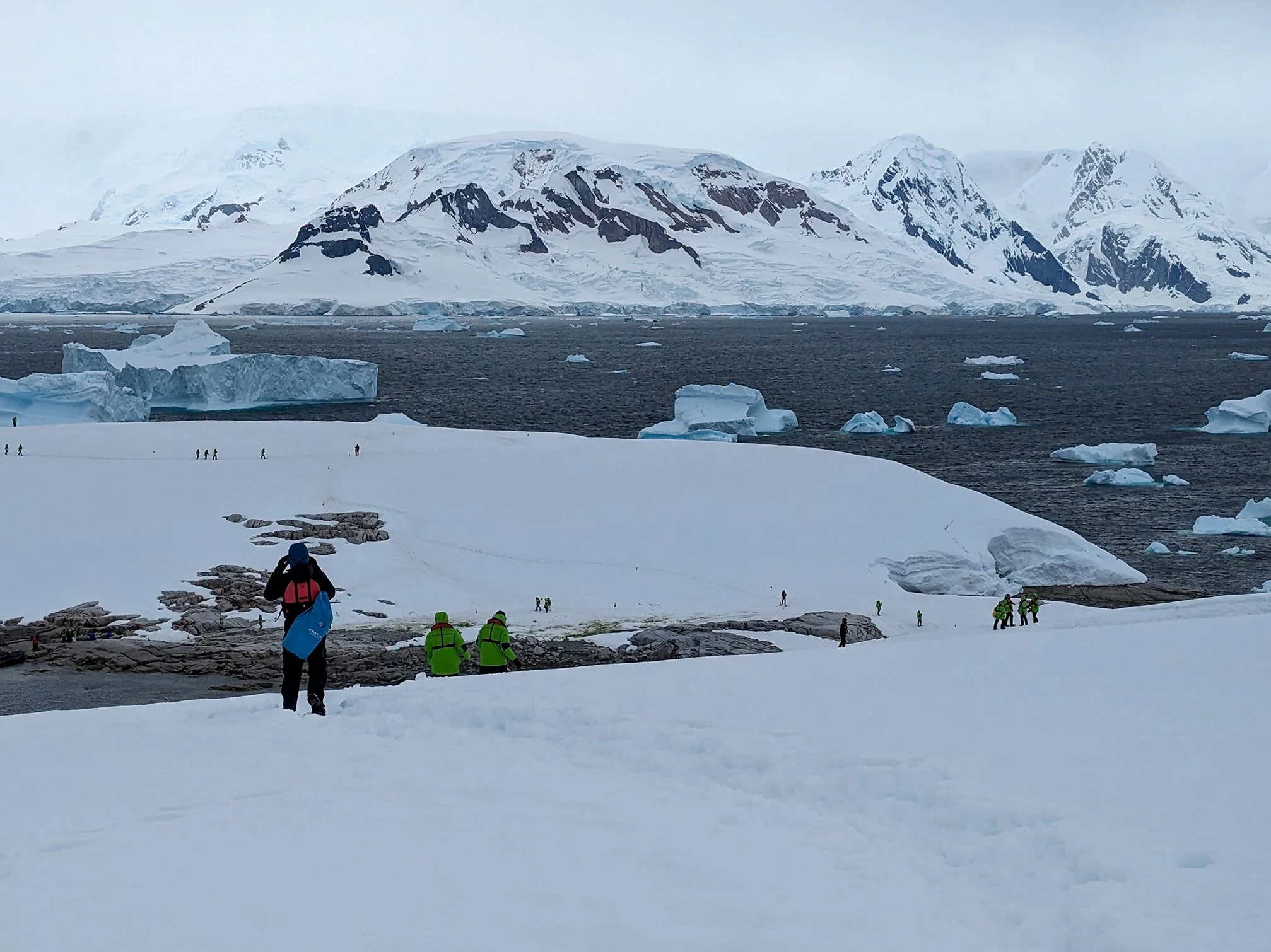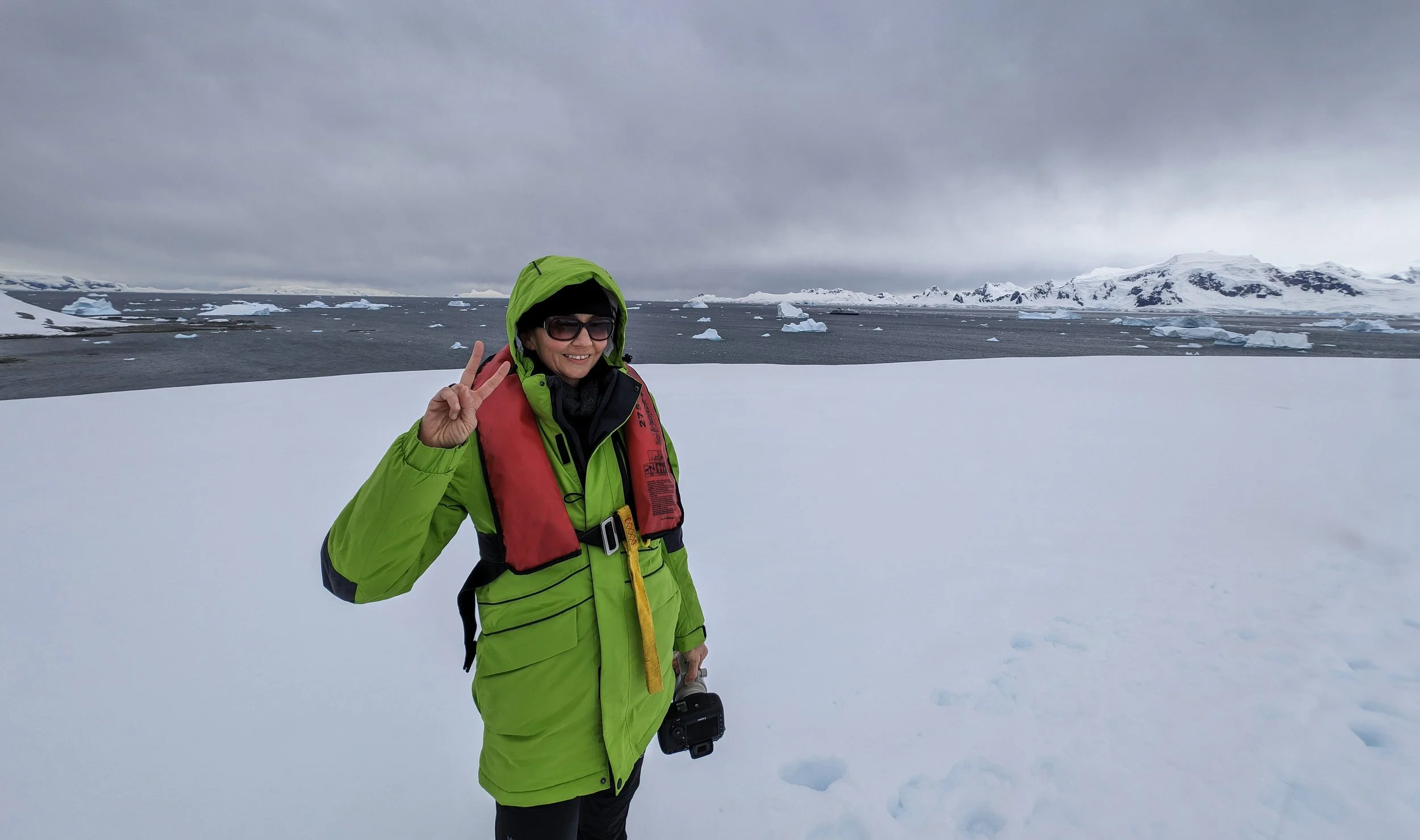Antarctica was first theorized by Aristotle in the 4th century BC. He argued that the symmetry of a sphere meant that the Earth's northern region had to be balanced by an equal southern region. Accounts of who was the first to actually set foot on the continent are hazy and depend of who you ask, but they don't even start until the 19th century. Despite its absolutely massive size, Antarctica has never had a human population, and only one million people have ever been there as of 2024. That doesn't mean humans haven't left a mark; they've left many over the years. On the morning of Day 8, we went to see some.
It was another calm windless day, perfect for a zodiac ride.
The first thing we saw were these two wooden boat remains. These types of boats were used to carry ice and snow to the whaling ships, where the water was used to power blubber processing.
Whaling became a huge industry after Antarctica was discovered, with many European nations racing to harvest as many whales as possible. Whale oil was used to power cities - light the street lamps, illuminate and cook at home, etc - it was basically an early stand in for electricity. It was also used extensively in cosmetics and fashion - whale baleen was used to make corsets, bodices and skirt hoops of those big poofy dresses women wore. Whale populations were brought to the brink of extinction until the practice was mostly suspended after electricity was invented (and because there were too few whales remaining to profitably mount such long and costly expeditions.)
Meet the Guvernøren - a Norwegian whaling ship that went down in 1915 after a fire broke out on board
Since Antarctica doesn't belong to anyone, it is governed by the Antarctic treaty, which was signed in 1959 by twelve nations that were actively exploiting its riches at the time. The treaty still holds today (more on that later) and stipulates that man-made artifacts are either removed if hazardous, or designated as historic monuments, if applicable.
The government of Norway doesn't care about the Guvernøren wreck, and thus has chosen not to protect it as a historic object. So it's simply sitting there, in a small sheltered harbor, quietly rotting away.
It also serves as a handy dock for absolutely mental people like this guy here, who crossed the Drake in THAT little dinghy, and was casually sipping his morning coffee, as we cruised by, befuddled.
Remains of a sad and cruel legacy
Saw some amazing seabird action on our ride that day
No outing would be complete without at least one seal showing off for the camera.
This time we got two more! These dappled chonkers are Weddell seals.
A gleam of hope on our way back to the ship. The whale populations have rebounded well since the collapse of the whaling industry, pointing to the amazing resilience of the natural world, despite humans' best efforts. As we cruised back to the Voyager, a large pod of whales surrounded us, including some curious juveniles. Because there were so many, we turned off our engine and waited, letting them pass. But they weren't in any hurry. They must have just fed, so they were happy to simply float at the surface and give us a show. And so we watched.
Not that I did anything to earn the honor, but I was so happy that they felt safe and comfortable enough to hang out right next to us.
Peep the baby's little whale eye sizing us up
You never get over seeing a whale in the wild, it's just not something you ever get used to. Watching these gentle giants rising and dipping below the water, hearing their powerful breath, observing the grace with which they move their massive bodies - you know you are in the presence of something magical and sacred.
It was an incredible privilege to have this moment.
Another continental landing in the afternoon took us to Portal Point. The fickle Antarctic weather turned once again, and a cold blustery wind was whipping us around, worrying the water. You get a little bit of everything in Antarctica - sometimes all in one day.
Some incredible icebergs in the bay of Portal Point.
This guy was a massive hit with the crowds.
Luckily there were no penguins in this area, because these deep footstep holes can be very dangerous for them. If they fall in one, they can't get out, and can actually starve. Our expedition crew made sure we stayed on our beaten paths, and took great care to fill in any holes left behind.
Draw me like one of your French girls.
the light of an otherworldly sun
beautiful rock formations of Portal Point.






























































